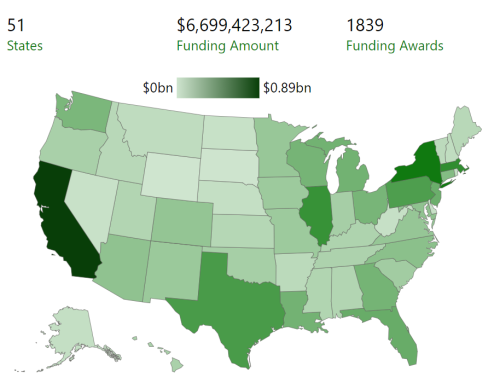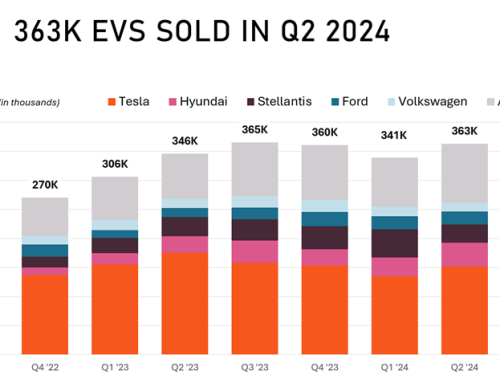
Source: EV Hub
|
One of the biggest challenges facing electric vehicle (EV) drivers is the inconvenience of pulling up to a public charging station only to find that the charger is not functional. We’ve covered the issue of charger reliability in depth in an earlier digest. Since then, research from J.D. Power has shed light on the extent of the issue, finding that through the end of Q1 2023, nearly 21 percent of EV drivers using public chargers experienced some sort of charging failure or equipment malfunction. Last week, the Federal Highway Administration (FHWA) launched a new federal effort to address this reality, the EV Charger Reliability and Accessibility Accelerator. Here’s the gist of it: What is the EV Charger Reliability and Accessibility Accelerator? The EV Charger Reliability and Accessibility Accelerator is funded under the National Electric Vehicle Infrastructure (NEVI) program. While the majority of NEVI funding is being distributed to states via formula, ten percent (nearly $470 million) is set-aside for the Secretary of Transportation “to make grants to States and localities that require additional assistance to strategically deploy electric vehicle charging infrastructure.” Recognizing the reliability challenges facing the current public charging network, the FHWA has dedicated the first $100 million to repair and replace existing chargers. What charging stations are eligible? The program will be informed by the Alternative Fuels Data Center (AFDC) Station Locator, focused on charging stations that are categorized as “temporarily unavailable.” Charging providers were instructed to update AFDC with their charging equipment status within four weeks of the NOFO announcement. Where are these “Temporarily Unavailable” Charging Ports? According to AFDC, there are currently 3,939 stations marked as temporarily unavailable with a total of 506 DCFC and 6,929 L2 ports. This means that more than six percent of charging stations listed on AFDC are currently unavailable, an indicator of the current state of charger reliability. The good news is that according to the NOFO, the FHWA anticipates that the $100 million available will cover the repair or replacement of all eligible stations. Five networks account for nearly 95 percent of unavailable stations, led by ChargePoint with nearly 2,500 stations. In terms of the rate of failure, Blink and EV Connect lead the way with 16 and 11 percent of their stations marked as unavailable, respectively. |
 |
|
“Percent Unavailable” represents the number of temporarily unavailable stations as a percentage of all stations operated by the network. California unsurprisingly sees the most unavailable stations with over 1,000, while Delaware takes the prize for the highest rate of failure with just under 9 percent (if we are including DC, it takes the cake by a wide margin with over 14 percent of all stations marked as unavailable). |
 |
|
“Percent Unavailable” represents the number of temporarily unavailable stations as a percentage of all stations in the state. What can the funding be used for? According to the FHWA, the funding can be used for both publicly and privately owned charging infrastructure that supports either DCFC or Level 2 charging. Furthermore, the NOFO requires that funded chargers should be operational within 12 months, and states that charger repairs in disadvantaged areas should be timely. Who is eligible to apply? Eligible applicants are limited to state departments of transportation and local governments, and applicants are encouraged to work directly with site hosts and current owners of EV chargers to “ensure viability of the project.” Applications are due to the FWHA by November 13th, 2023. More information on the application requirements, selection criteria, and review process can be found here. |


